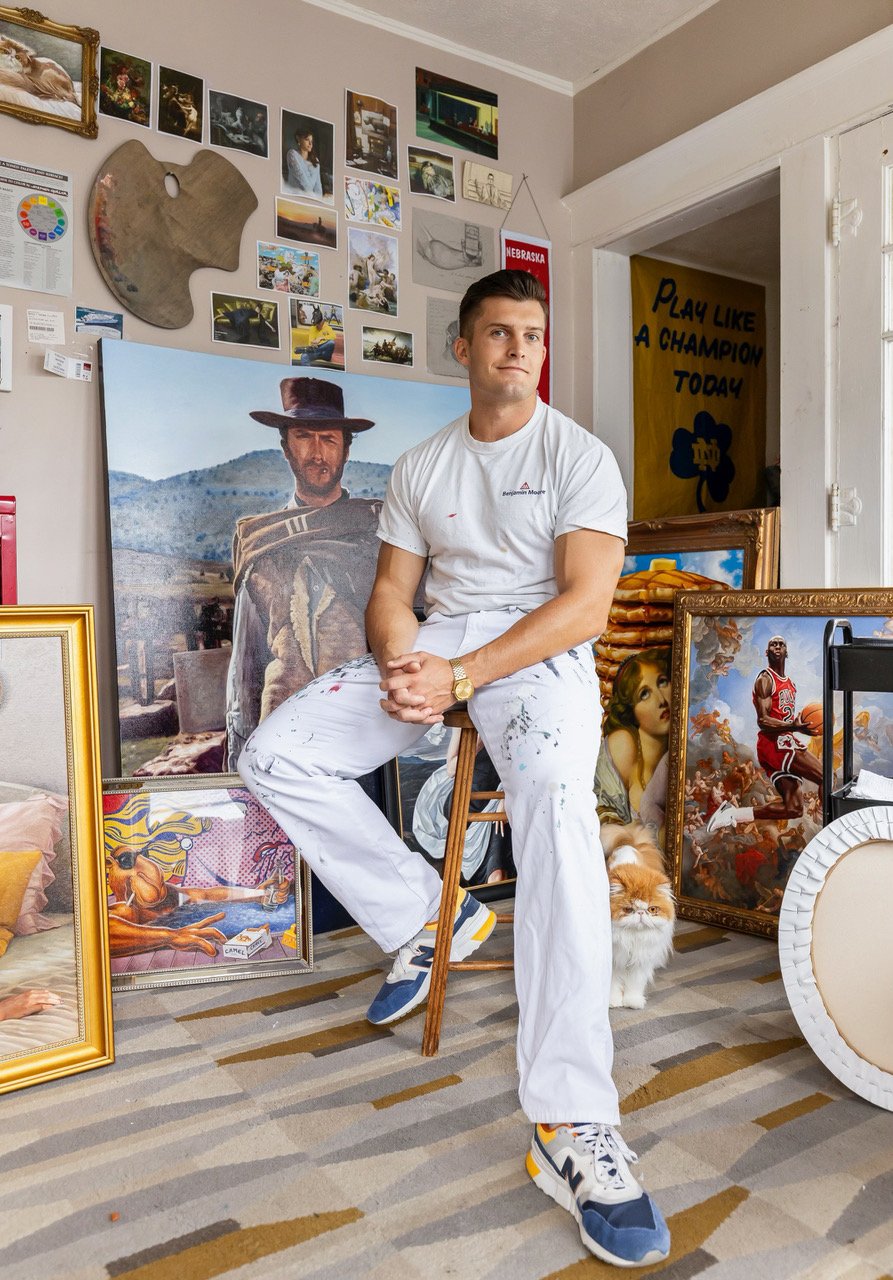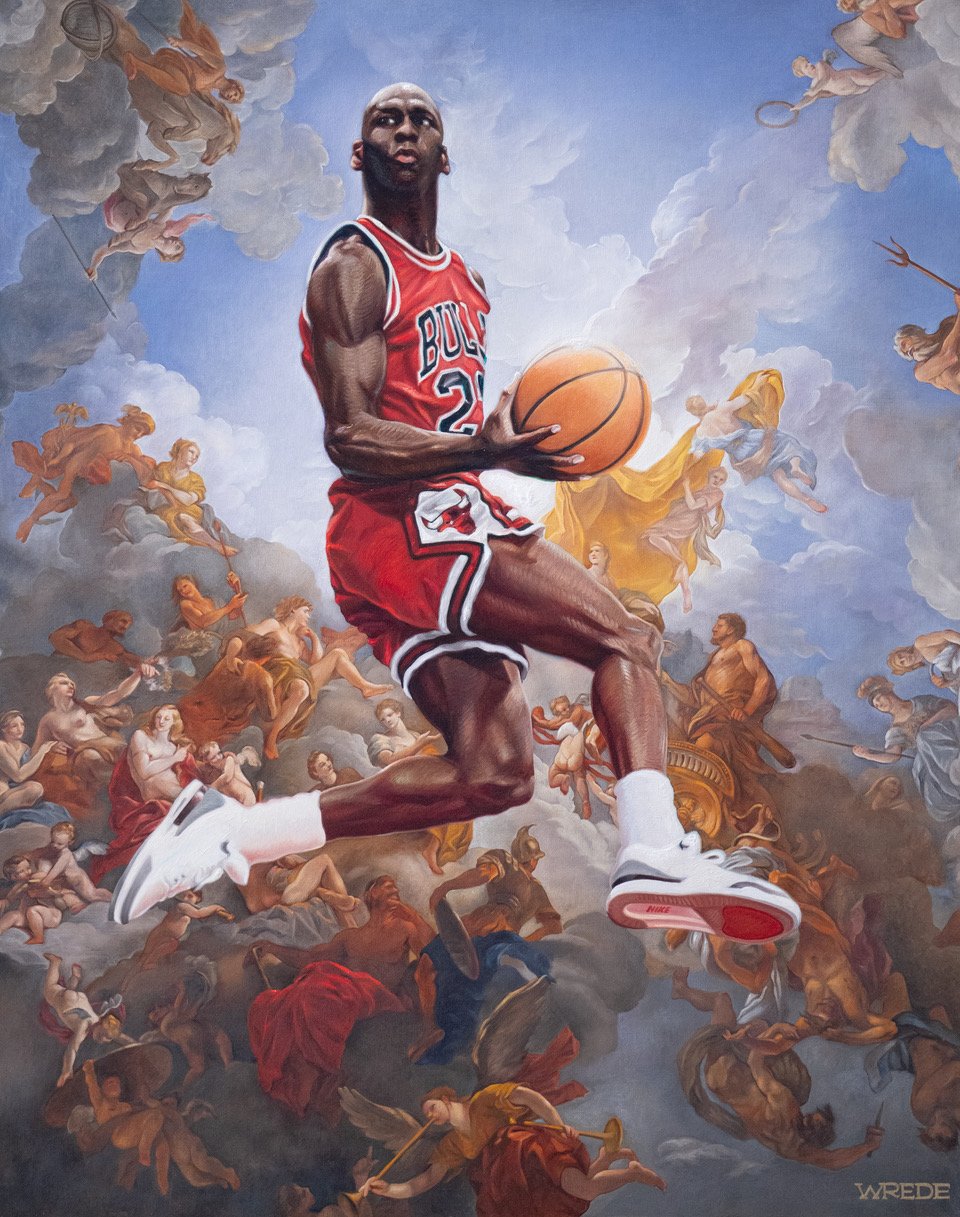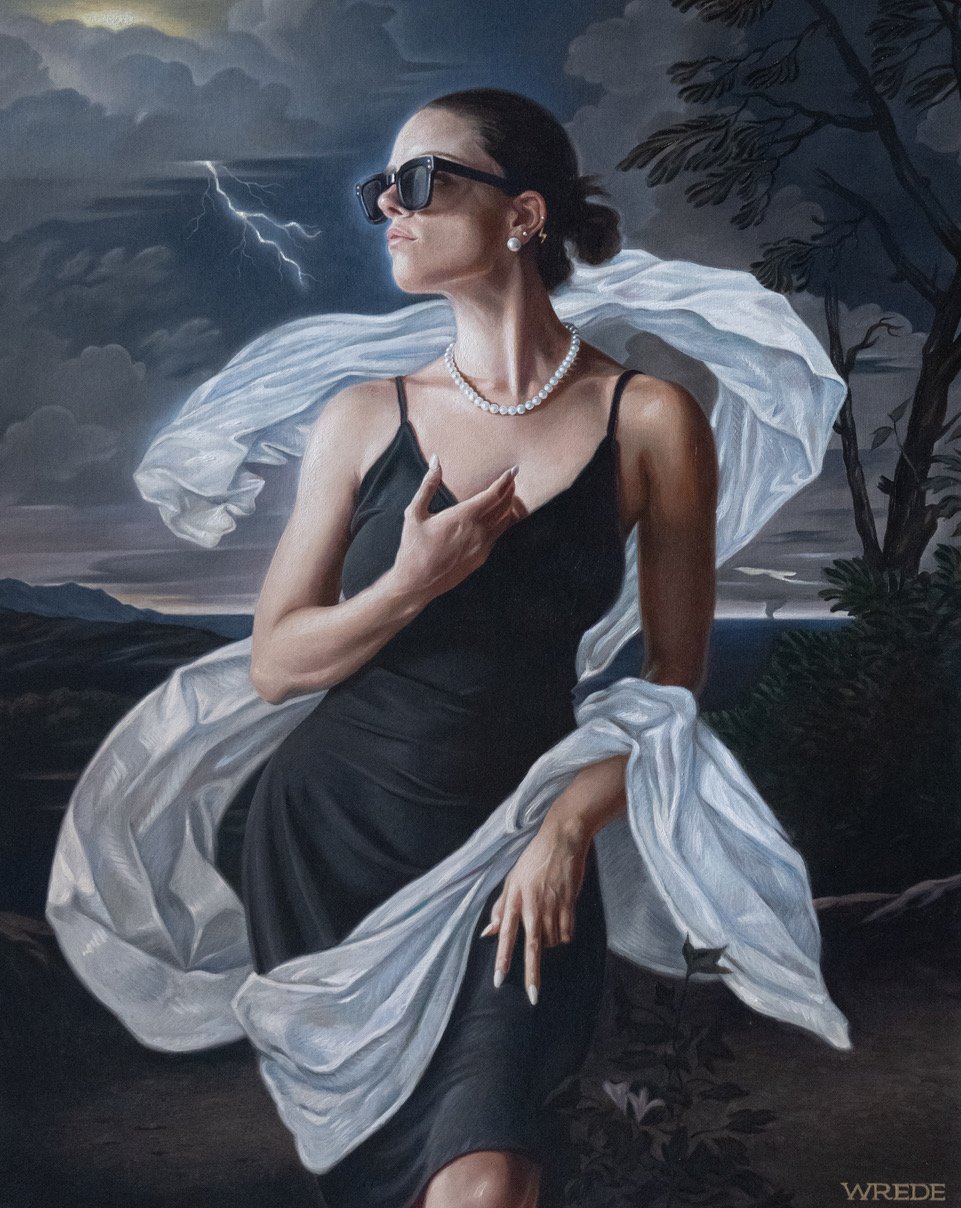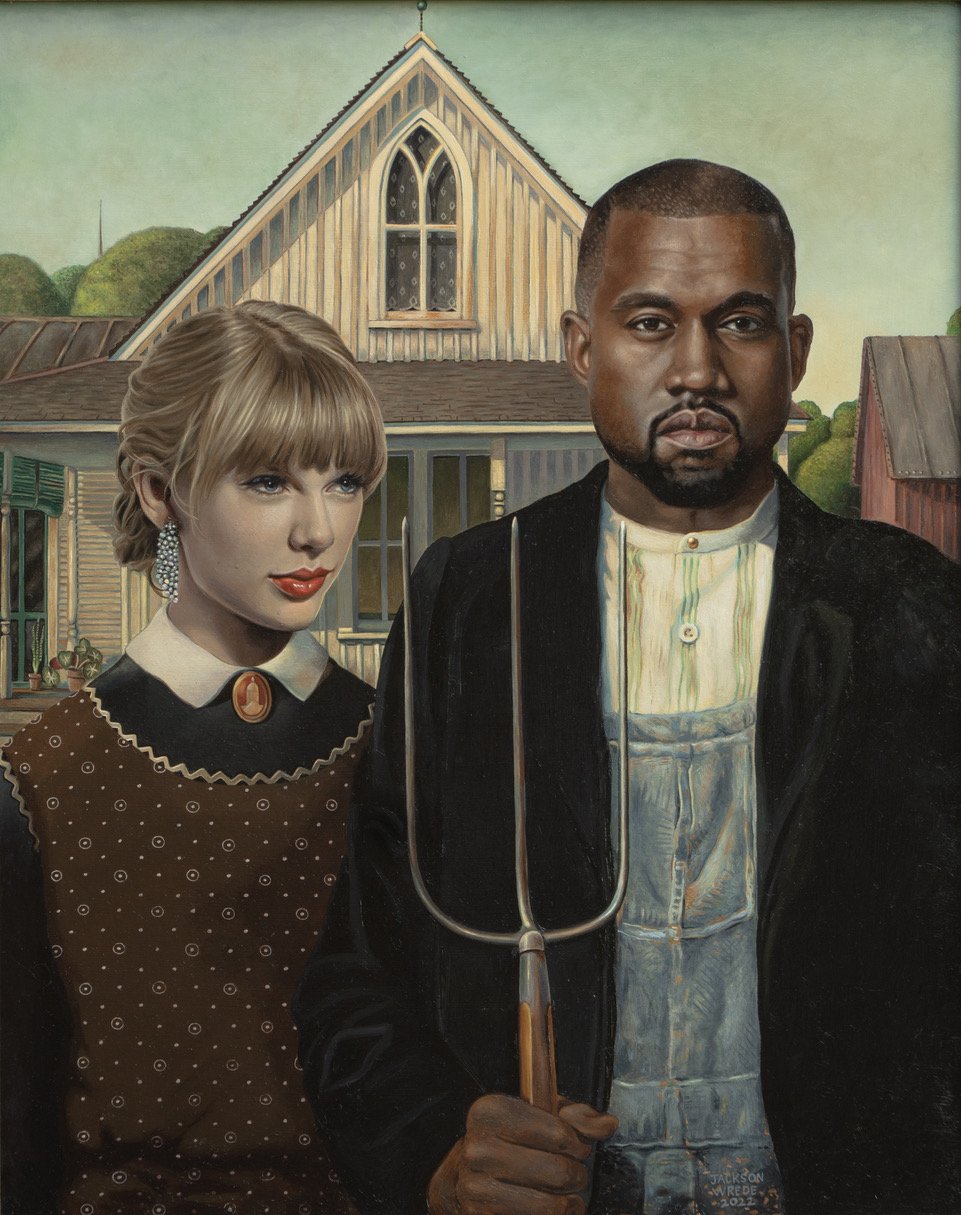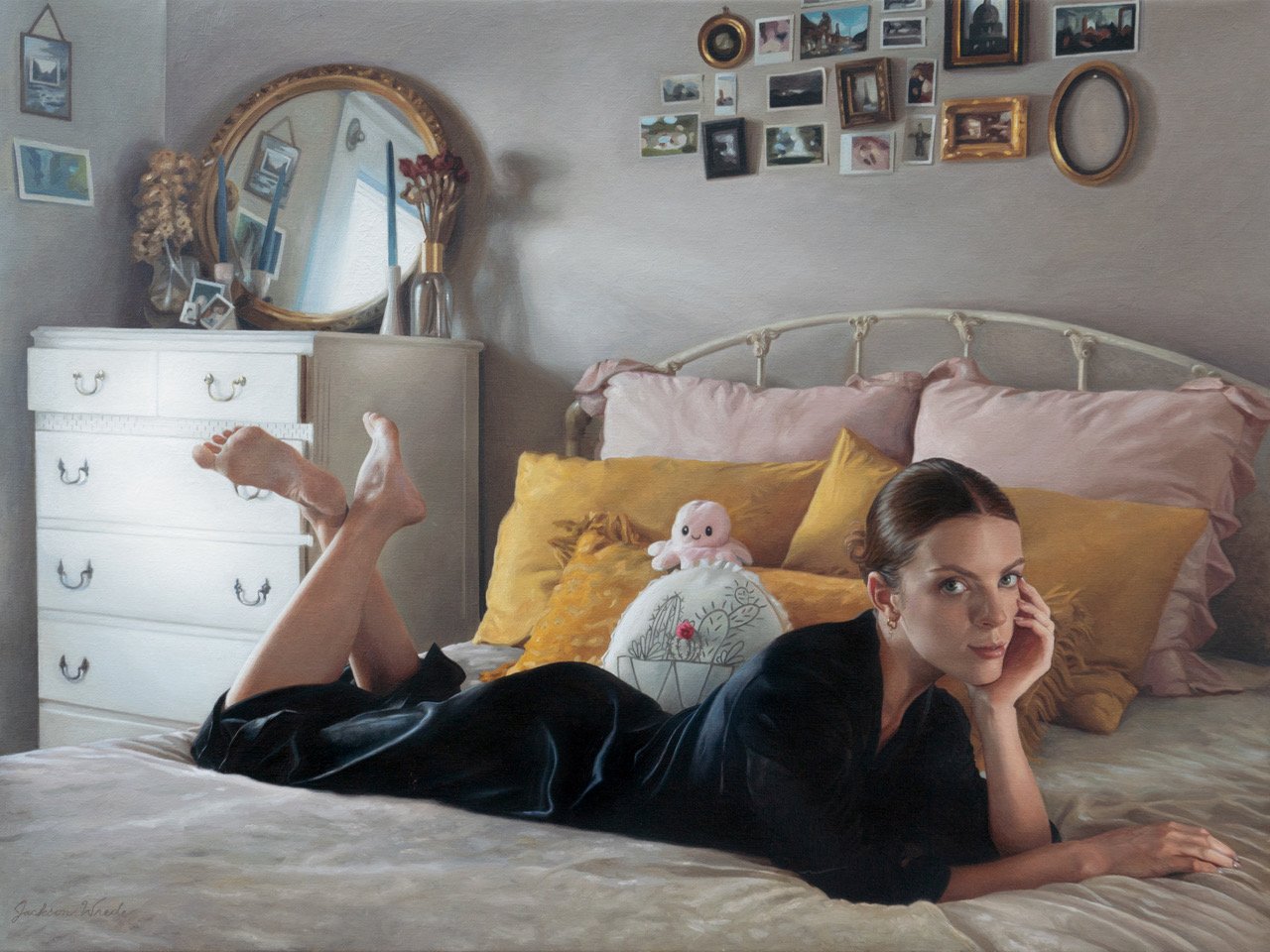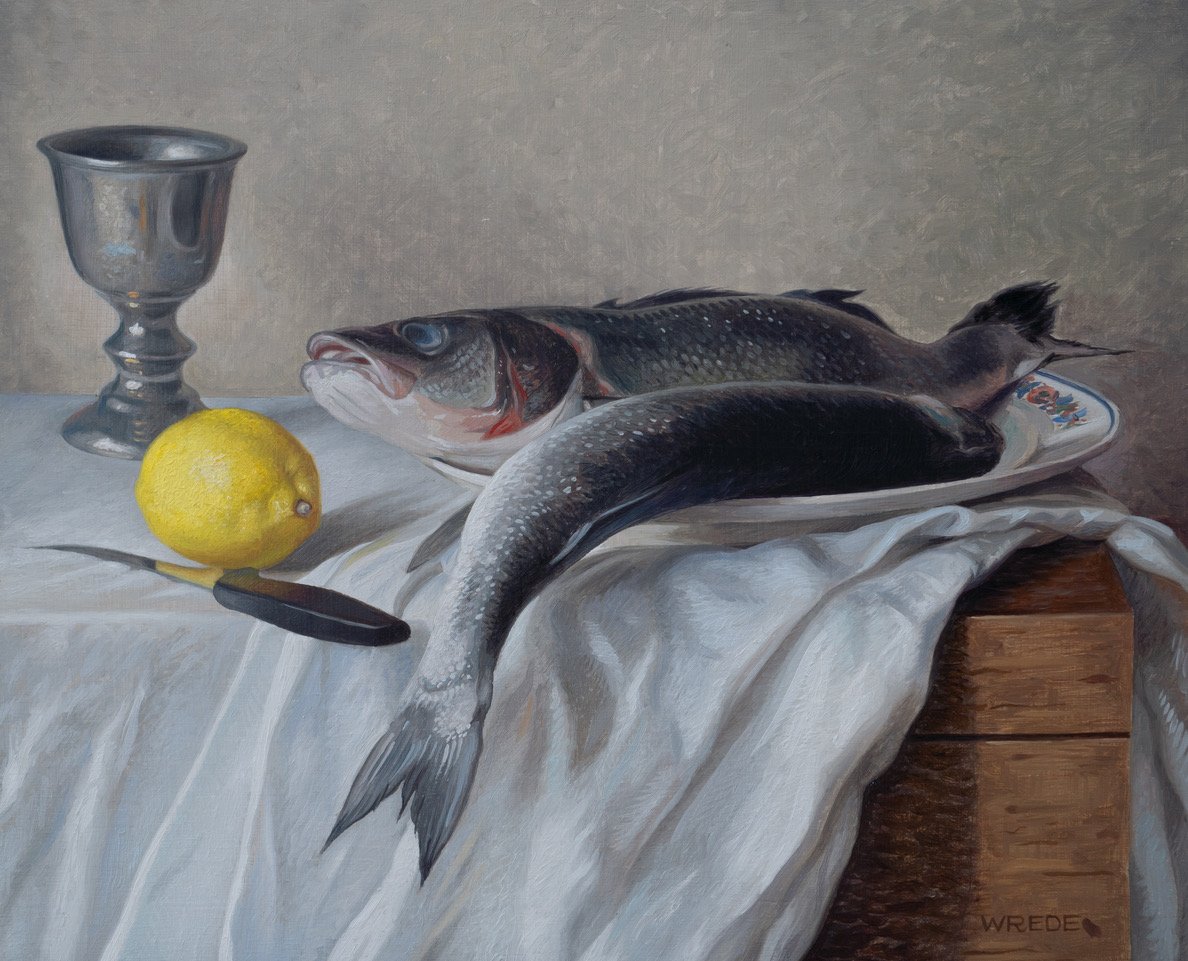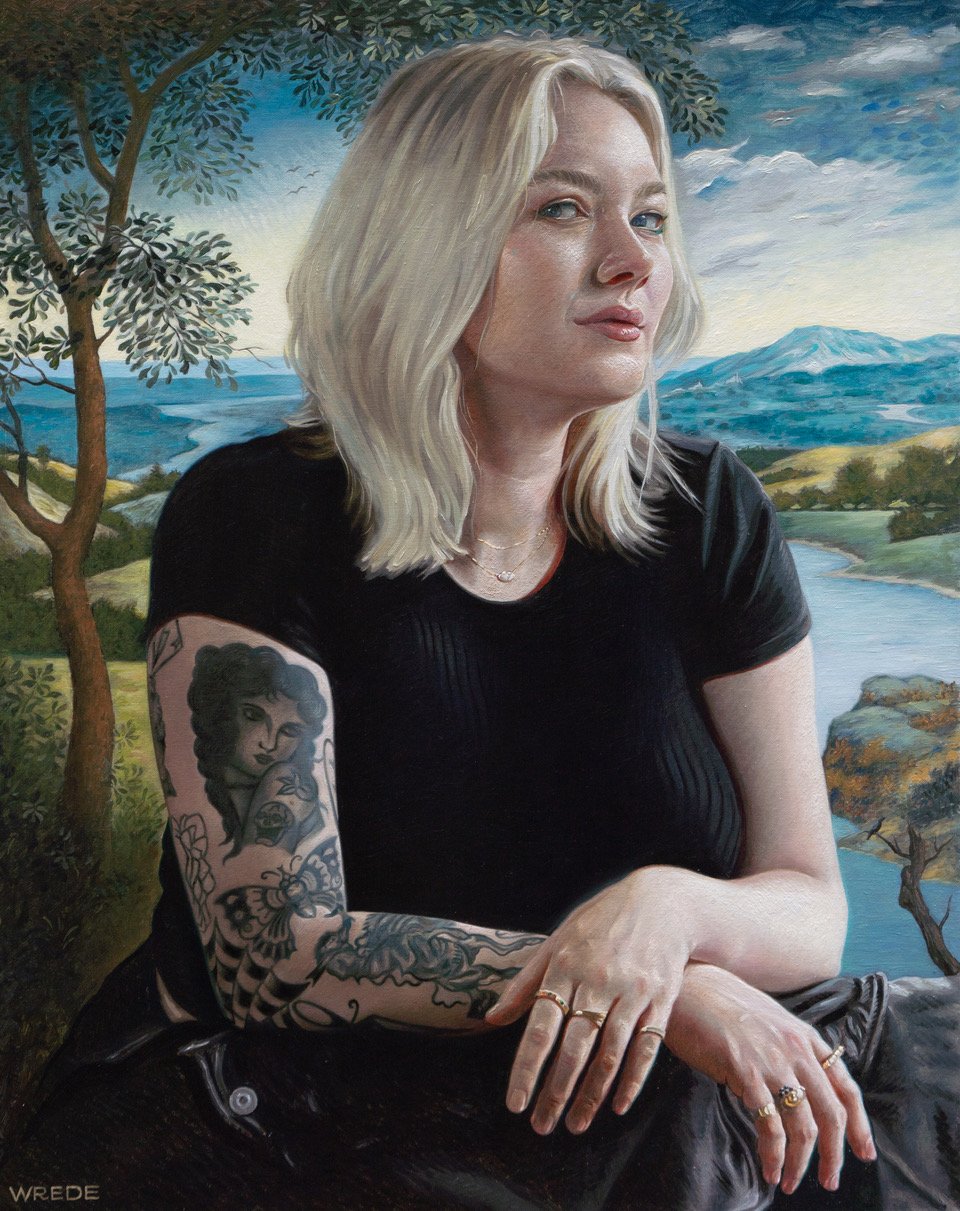ARTIST INTERVIEW: Jackson Wrede
Tell me about yourself. What inspired you to become an artist?
I grew up in the Chicago suburbs and have loved drawing for as long as I can remember. My parents would get me black magic markers for Christmas and I would draw on white computer paper pretty much everyday going growing up. I loved drawing caricatures, cartoons, and other pop culture characters.
My art really took a backseat in high school though when I was a three sport athlete. It wasn’t until I took an oil painting class in my freshman year of college at the University of Notre Dame that I knew painting was really what I should do for a living. I thought maybe I would major in graphic design or finance, and I didn’t think it was possible to be a painter as a ‘real job’, much less a career. But that was back in college. Now I am 27 years old and have been riding the wave of painting full-time for about 4 years now.
You’re fascinated by old contemporaries and aspire to ‘create artwork that can better contribute to the world of today.’ How have you been able to do this through your work? Which artists have been influential to you?
The art I was exposed to as a child and young man came from popular culture —advertisements, movies, street art, graffiti, Jordan merchandise. This is the style I pursued until I took some art history classes in college and had my introduction to the great art of the past; oil painting in particular. I was fascinated by all the different movements that have culminated in the pluralistic nature of contemporary art, and I just think these great, dead painters have so much to teach us. Not only about technique, obviously, but also about style, aesthetics, how to be a voice in your culture, and how to preserve the passage of time in a permanent, beautiful way. I think because of the times we live in, many people don’t have the attention span to appreciate these lessons that really only become evident when you visit a museum. But if I can take what is good about some of those great works and repackage it in a way that speaks to a more modern audience, I see that as my way of placing my brick in the wall of art history.
Cyclone
Describe your creative process for the painting, ‘All Too Famous’. What is the narrative here?
It’s funny you ask about this piece specifically because it was actually a commission request and not my own original idea. The inquiry came from a couple I knew back in college—the girl is a Swiftie and her boyfriend is a huge Kanye fan. They now live in Chicago where the Art Institute of Chicago is home to Grant Wood’s original American Gothic, arguably the most famous piece in the museum. They asked if I could substitute the heads of these pop culture icons onto the bodies in the scene, and I told them I could do that no problem.
So the truth is there was not a ton of intellectual vigor that went into its creation, but it's funny when you take such popular, polarizing figures and superimpose them into famous imagery that already carries some cultural baggage. So many correlations, inferences, and critiques can be drawn from this arrangement, and it just goes to show how many associations people make in the collage format when the subjects are recognizable and familiar. This may explain my reliance on pop culture figures and famous paintings even in my work today.
What are the characteristics of an interesting composition? What draws you to the subjects you paint?
So many have artists have rules or templates they think about when composing an image—the rule of thirds, Golden Ratio, we have heard them all. And I don’t use any of these really. Perhaps they accidentally come out in my work sometimes, but I think the main question you have to ask yourself is “does this look cool?” There are certain things you can do like avoid points of tension and balancing the harmony & variety of your image, but those considerations should come secondary to the overall effect and integrity of the “whole”. Recently though I have been fascinated by the maximal, spiraling, whirlpool compositions of some of the great Baroque masterpieces.
It’s the same with the subjects I choose to paint. I don’t consider myself just a portrait painter. Or just a still life paintiner, landscape, abstract, pop, etc. I paint what is interesting to me, and if I don’t think it will be cool I won’t waste my time sinking dozens of hours intro bringing that vision to life. I think a lot of artists figure out one way to make an image and then they beat that horse to death. You can look at their work and recognize it as theirs right away. This is the standard in the art world and is seen is a good thing, but I’m not so convinced. Of course by definition you cannot make a painting that is not your own, but I think the more important consideration is arming yourself with the biggest artistic toolbox or skillset you can so that when it comes time to make a painting, you have total freedom and a multitude of possibilities in how that aim is achieved.
Thinking about your most recent work, what was your creative process? Describe the journey of the piece from start to finish.
My most recent painting was a portrait I did of my friend Dillon. I wanted to create my own modern rendition of a 1520 painting by Titian called “Man with a Glove,” and Dillon had the right look and sense of fashion to fit this unique situation. He came over to my apartment and we had a half hour photoshoot where he tried on a variety of outfits in different lighting conditions. I edited the photos from our session and composed a mockup in Photoshop that would serve as my core reference for the painting. Whenever I start a painting, I have a folder of images prepared including my reference photographs but also pictures of example paintings that I admire and may somehow be able to incorporate into my own version. I glue these linen panels I really like onto a panel of wood I have cut to the same size, and then I make a pretty detailed graphite drawing of what will eventually become the painting. First though, I go over the most important lines of my drawing with a Pilot v7 precise ballpoint pen, and from there I basically fill-in my line drawing with layers of oil paint. For this style of painting, I try to work in three layers starting with thin passages of shadows and building up the texture of more impasted highlights. This painting took about 4 weeks to complete from the time of the photoshoot to the the time it was varnished. I would love to show you a photo but unfortunately I can’t share until Dillon comes over for our surprise unveiling party coming up on December 1st!
What does a typical day look like for you in the studio?
I wake up pretty much whenever my body tells me to. Sometimes this is as early as 7, sometimes it’s as late as 10 if I was up late painting the night before, but usually I am making coffee around 8:30 or 9. I feed my two cats Penelope and Miss Mary Mack, reply to emails, and take care of a few other morning rituals so that I am in my chair painting by 10am most days. I usually paint until 1 or 2 in the afternoon, take a break to workout and eat lunch, and then I paint for another couple hours or do administrative & prep work until dinner time. Then unless we have something going on the evening, I usually paint from 7 or 8 until midnight. So I aim for 6-10 hours of painting time every day, but I make my schedule flexible so that I can live my life away from the easel in a fulfilling way as well and make good on my non-artistic responsibilities. For so many artists, putting in the proper studio time feels like a chore but for me the opposite is true. So many painters also love to play guitar, or build furniture, or go fishing. I don't have any hobbies besides painting, I don’t have kids yet, and life is pretty simple so I have the luxury of being pretty prolific at this point in my career.
What has been your biggest achievement so far as an artist? Has there been any challenges?
I hear a lot of advice in the art world that you shouldn’t compare yourself to others and that as long as what you’re doing what is important to you, just keep doing it. I don’t want to sound cold or discouraging, but I generally disagree with this trend. I believe approval and recognition from others—whether that be through institutions, social media, or people’s checkbooks, is important validation and a testament to your cultural value as a creator. This year I have won a number of awards in my regional art scene including grand prizes in the 42nd Annual Michigan Fine Arts Competition in Birmingham, MI as well as the 79th Annual Wabash Valley Exhbition at the Swope Museum of Art in Terre Haute, IN. I also have some particular art sales that come to mind, and when I think about how certain people are willing to spend that much money on something that I created with my own two hands—there’s just no other feeling like it. I think my background in wrestling and boxing serves me well and gives me a competitive advantage, as well as my desire to be an entrepreneur, which I know so many artist really struggle with. Some of my favorite painters throughout art history—Rubens, Bouguereau, Bierstadt—were far from starving. They were incredibly skilled but also super industrious and savagely competitive. I think if you’re gonna be a world class realist painter, which is my ultimate goal, you have to possess these qualities.
Why do you think art is important in society?
My answer here also may get me in a bit of trouble, but I actually don’t think most art is all that important to society. The overwhelming majority of paintings will end up in a dumpster somewhere and the luxury of our modern age has made artists are a dime a dozen more than any other point in history. The art market is one of the most oversaturated on the planet and it is very difficult to succeed when there are more paintings and photographs than there are walls to display them.
With that being said, the art that persists and the paintings that truly endure, those works that push the cultural needle and crank the dial, are among the greatest contributions our human race has made to existence itself. When one considers that out of a cloud of atomic particles emerged a species intelligent enough to craft the statue of David, tears can well up in your eyes. I’m not religious in any traditional sense, but the act of creation is the ultimate antidote to the cold indifference of the universe. People make art for many reasons: self-expression, therapy, experimentation. I make it because I want to be the best, and I want to make something that other people can be proud of and inspired by. I want them to say, “wow look what that guy is doing! If he can do that with what he is interested in, I wonder what the ceiling is for me in my own interests?”
And that’s the thing, it takes so many failures to actually create something that is worth saving and remembering. I put my all into just about every painting I make, and I do this with the self-awareness that if my work is remembered at all, there might only be a handful of images that people actually remember. It takes 100 failed paintings to make one good one and 1000 to make a great one. I am somewhere in the ballpark of 200 right now, so I am planning to just redline this body and mind until I finally produce a great one.


